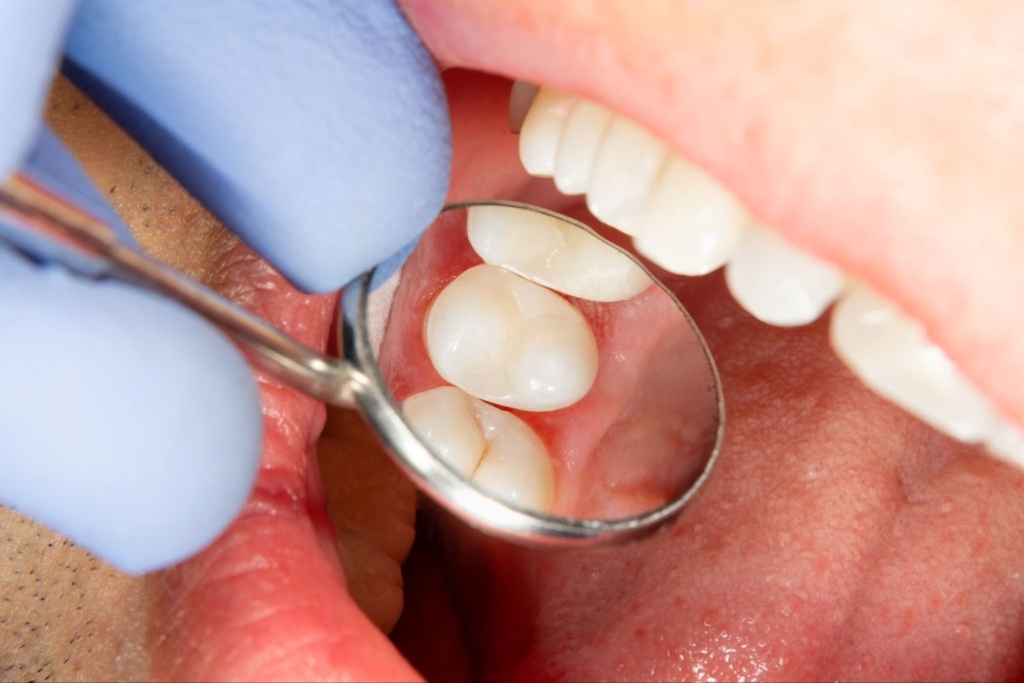When a tooth becomes damaged or infected, it can compromise both your comfort and dental function. Two common treatments for addressing these issues are root canals and tooth extractions.
Both options serve to relieve pain and restore oral health, but the best choice depends on your unique situation. Factors such as the condition of the tooth, overall dental health, and long-term goals are important to consider. With guidance from your dentist, you can make an informed decision that best suits your needs. Let’s take a look into each of these options.
What Is a Root Canal?
A root canal is a dental procedure designed to save a tooth that is severely damaged or infected. The treatment involves removing the infected or damaged pulp from inside the tooth. Once the pulp is removed, the inner chamber of the tooth is thoroughly cleaned, disinfected, and sealed to prevent further infection.
To complete the process, the tooth is often restored with a crown to strengthen its structure and protect it from future damage. The primary goal of a root canal is to preserve the natural tooth, allowing it to function normally while maintaining your smile and overall oral health.
What Is a Tooth Extraction?
A tooth extraction involves the complete removal of a tooth from its socket in the jawbone. This procedure is typically recommended when a tooth is too damaged, decayed, or infected to be saved through other treatments, such as a root canal.
Extractions are also necessary in cases where the tooth poses a risk to overall oral health, such as severe crowding, advanced gum disease, or impacted wisdom teeth. Tooth extraction can be an essential step in alleviating pain, preventing further complications, and restoring oral health.
Pros and Cons of Root Canal vs Extraction
When deciding between a root canal and a tooth extraction, it’s important to weigh the benefits and drawbacks of each option.
| Category | Root Canal | Tooth Extraction |
| Pros | Preserves the natural tooth, maintaining your smile and structure. | Quick procedure, especially for straightforward cases. |
| Prevents neighbouring teeth from shifting. | Typically lower upfront cost. | |
| Maintains normal chewing function and jawbone health. | ||
| Cons | May require multiple visits for completion. | Can cause shifting teeth and misalignment if not replaced. |
| Higher initial cost (though often less costly in the long term). | May require additional treatments like bridges or implants. | |
| Jawbone loss over time due to the absence of a tooth root. |
When Is Each Treatment Required?
Root Canal
- Severe tooth decay that has reached the pulp.
- Abscessed teeth, where infection has developed inside the tooth or at the root.
- Cracked or damaged teeth that can still be repaired and preserved.
Tooth Extraction
- Teeth that are too severely decayed or damaged to be saved.
- Crowding or orthodontic needs, where removing a tooth helps align the others.
- Advanced gum disease, which can cause teeth to become loose and unstable.
When Both Root Canal and Extraction Can Be Options
- Extensive Tooth Decay: If a tooth is severely decayed but structurally intact, a root canal might save it. However, if the tooth’s foundation is compromised, extraction may be the better choice.
- Cracked or Fractured Teeth: Teeth with cracks extending to the pulp can often be treated with a root canal, provided the damage hasn’t reached below the gum line. If the fracture is too severe, extraction may be necessary.
- Patient Preferences: Some patients prefer extraction to avoid multiple appointments or the cost of root canal therapy, while others value preserving their natural teeth and opt for a root canal.
The Role of Aftercare
Following your dentist’s aftercare instructions not only promotes healing but also reduces the risk of complications.
Root Canal Aftercare
After a root canal, you may experience mild soreness for a few days. Pain relief medication and a soft diet can help minimise discomfort. Maintaining good oral hygiene is key to prevent infection, and you’ll likely need a follow-up appointment to place a crown for long-term protection.
Tooth Extraction Aftercare
Recovery from an extraction typically takes a few days to a week. Common tips include avoiding strenuous activity, eating soft foods, and using ice packs to reduce swelling. It’s important to avoid disturbing the blood clot in the socket by refraining from drinking through straws or smoking.
Conclusion and Call to Action
Root canals focus on saving and preserving your natural tooth, while extractions may be necessary for severe cases or long-term dental goals.
At Granite Belt Dental, we’re here to help you make the best choice for your oral health. Our compassionate and experienced team is dedicated to providing expert care and clear advice for your situation. If you’re unsure which option is right for you, book an appointment online or give us a call today, and let us guide you toward a healthier, more confident smile.

